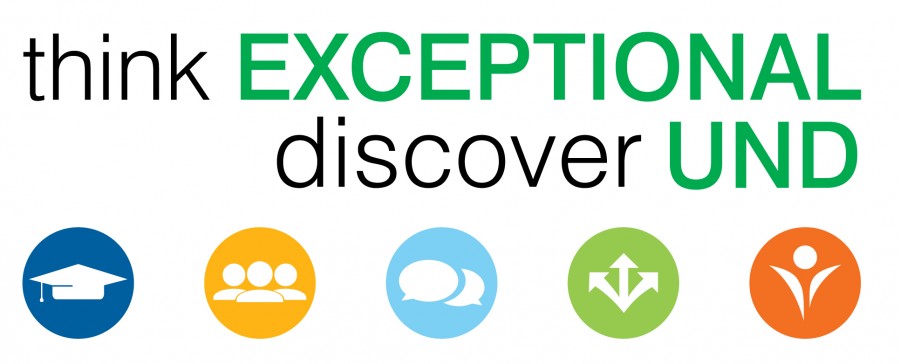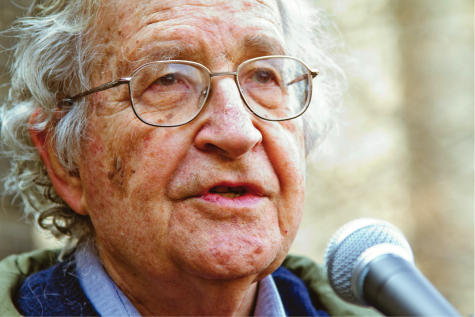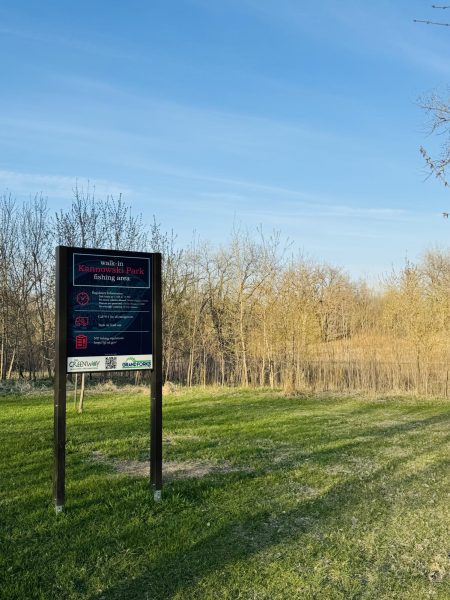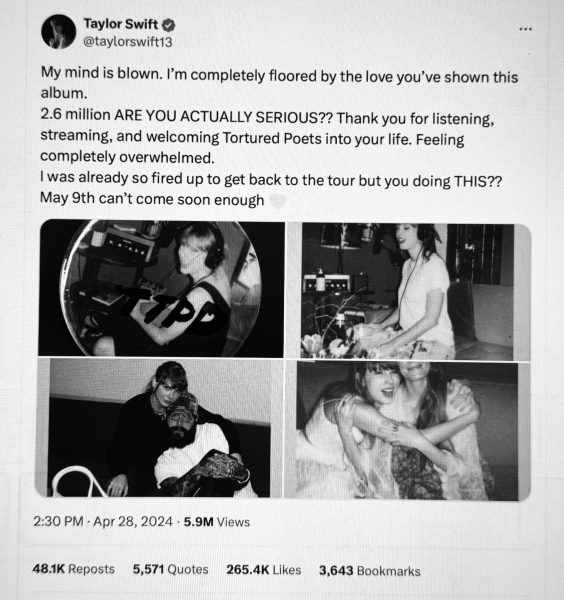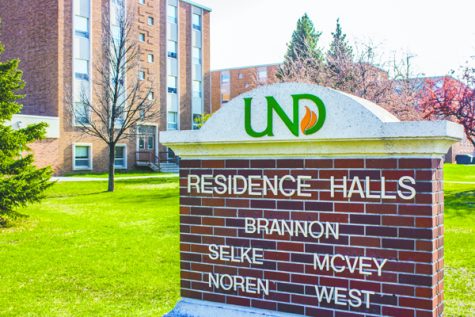A review of Kelley’s exceptional UND
The three logos represent UND’s priority on enrichment, expansion and enhancing the quality of life for everyone at UND. Image courtesy of und.edu
Strategic priorities have been laid out to make UND exceptional. The roadmap to make this university exceptional was laid down by former President Robert Kelley in 2010. Kelley’s roadmap had five priorities: “enrich the student experience, encourage gathering, facilitate collaboration, expand UND’s presence and enhance quality of life.”
Five years have passed since Kelley gave us his visual roadmap. Now that he is retired, I’d like to reflect on the steps Kelley took to further UND. In my assessment of Kelley’s performance I will not be discussing the nickname fiasco because it’s an issue larger than him.
In an effort to enrich the student experience, Kelley wanted to develop and implement high-impact, nationally recognized practices in teaching and learning. Since 2010, UND has had a focus on creating SCALE-UP (Student-Centered Active Learning Environment for Undergraduate Programs) classrooms as well as living and learning communities. The first classroom of this nature is all too familiar to biology undergrads who have had a class in the basement of O’Kelly Hall. The classroom is designed to facilitate small group, discussion-based learning that focuses on problem solving.
While I really like the classroom idea in theory, the learning experience leans heavily on how the instructor of the SCALE-UP room manages the learning. A professor who approaches the SCALE-UP classroom as if it were a traditional lecture bowl will not succeed. Neither will a class that focuses on students teaching themselves, because then there’s no point in having a professor teach the class.
I think Dr. Jeffrey Carmichael of the biology department does the best job of teaching in the SCALE-UP room. He uploads his lectures online for students to watch before attending class. Then in class, he will briefly review what was said in his online lectures before allowing students to work in their groups to apply their new knowledge to a couple of problems.
In order to encourage gathering and the personal interaction of students, faculty, staff and community members to facilitate idea sharing and develop a sense of community, Kelley improved Welcome Weekend events and made orientation more streamlined. He built the impressive Gorecki Alumni Center, remodeled Wilkerson with more gathering locations and renovated the basement of the Memorial Union.
While I think the Gorecki is a nice thing to look at while I’m walking by, it seems to be rarely used when prospective students are not gathering in droves to go on tours of campus. My belief is that the building was constructed to simply be something pretty on campus that will attract prospective students and alumni donations and does not serve a majority of students on campus.
In an effort to facilitate collaboration among academic programs and disciplines as well as between faculty, staff, and students in teaching and learning, research and extracurricular activities, Kelley accomplished this by creating the interdisciplinary program which includes digital humanities courses, a leadership minor, a social entrepreneurship graduate certificate and a master’s degree public health program.
As a wildlife biology major and leadership minor who’s not involved in any of the other aforementioned programs, I can only comment on my experiences in the leadership program.
The leadership minor is flexible enough to allow someone who is not a communication or business major to meet the requirements of the minor fairly easily. I also think a minor in leadership is broad enough to have an impact on your resume in any field. The classes you take for a leadership minor prepare you to realize your own leadership potential and I think it’ll make anyone more employable, especially if the applicant is applying for a leadership position.
The goal of expanding UND’s presence beyond the campus boundaries to promote cultural, economic, intellectual and social vitality has been accomplished since Kelley retired. To meet this goal, Kelley created the UND Art Collections, continued supporting the writer’s conference and created the position of Vice President of University & Public Affairs to enhance communication, marketing and government/community outreach and relations.
The last priority to make UND exceptional is to enhance the overall quality of life for all UND stakeholders. In an effort to meet this goal, the Wellness Center created the seven dimensions of wellness, the diversity advisory council was established and the learning and development program has staff-led training opportunities that are aimed at educating faculty and staff on UND processes and policies.
Overall, I think Kelley did a great job in modernizing campus. The renovation funds were allocated judiciously, and while I still think the Gorecki was a waste, the new law school, medical school and high-performance center more than make-up for his one major renovation fault.
Nick Sallen is the opinion editor for The Dakota Student. He can be reached at [email protected]


